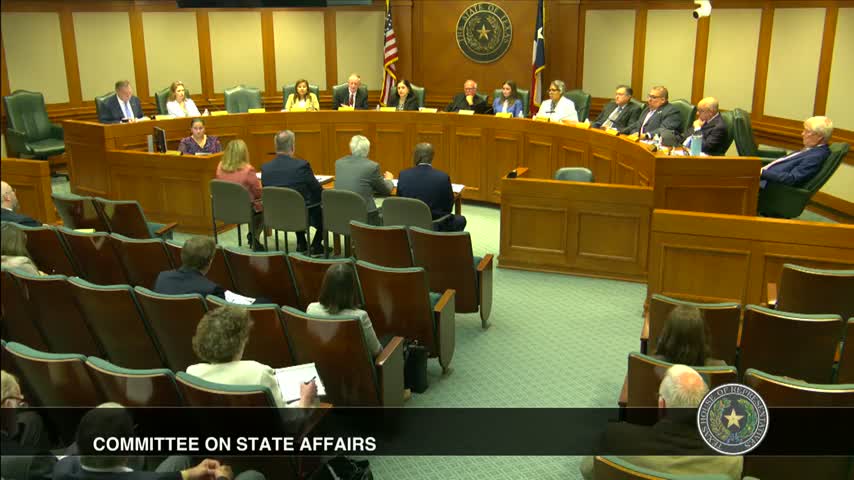Lawmakers demand urgent solutions for rising insurance costs
August 16, 2024 | Committee on State Affairs, HOUSE OF REPRESENTATIVES, Legislative, Texas
This article was created by AI summarizing key points discussed. AI makes mistakes, so for full details and context, please refer to the video of the full meeting. Please report any errors so we can fix them. Report an error »

In a recent government meeting, officials discussed the ongoing challenges facing the Texas Windstorm Insurance Association (TWIA), particularly regarding its funding model and the impact on policyholders. The conversation highlighted the long-standing issue of subsidizing insurance costs for residents in high-risk coastal areas, a practice that has persisted for over 50 years.
One key point raised was the reliance on assessments to insurance carriers during catastrophic events, which, while an option, is not the primary source of funding for TWIA. Instead, premiums are the main revenue stream. However, the discussion revealed that when insurance companies are assessed, they often pass those costs onto policyholders through rate increases, disproportionately affecting those in other parts of the state who may not be at risk of severe weather events.
A committee member expressed concern over the rising insurance rates faced by constituents, noting that rates have doubled despite the absence of significant weather events in their area for nearly a decade. The member emphasized the need for a new funding source that does not rely on assessments from policyholders in less risky regions, stating, \"It doesn't make any sense to assess policyholders in other parts of the state.\"
The officials acknowledged the necessity of finding alternative funding solutions to support TWIA while ensuring that the burden does not fall on those who are not directly impacted by coastal risks. They also stressed the importance of transparency in communicating how insurance works and the effects on the public, urging agencies to improve their outreach and information dissemination.
As the meeting concluded, there was a shared commitment to collaborate on identifying viable funding options for TWIA, with the understanding that the current model is unsustainable and requires reform. The discussions set the stage for future legislative efforts aimed at addressing these pressing issues in the upcoming session.
One key point raised was the reliance on assessments to insurance carriers during catastrophic events, which, while an option, is not the primary source of funding for TWIA. Instead, premiums are the main revenue stream. However, the discussion revealed that when insurance companies are assessed, they often pass those costs onto policyholders through rate increases, disproportionately affecting those in other parts of the state who may not be at risk of severe weather events.
A committee member expressed concern over the rising insurance rates faced by constituents, noting that rates have doubled despite the absence of significant weather events in their area for nearly a decade. The member emphasized the need for a new funding source that does not rely on assessments from policyholders in less risky regions, stating, \"It doesn't make any sense to assess policyholders in other parts of the state.\"
The officials acknowledged the necessity of finding alternative funding solutions to support TWIA while ensuring that the burden does not fall on those who are not directly impacted by coastal risks. They also stressed the importance of transparency in communicating how insurance works and the effects on the public, urging agencies to improve their outreach and information dissemination.
As the meeting concluded, there was a shared commitment to collaborate on identifying viable funding options for TWIA, with the understanding that the current model is unsustainable and requires reform. The discussions set the stage for future legislative efforts aimed at addressing these pressing issues in the upcoming session.
View full meeting
This article is based on a recent meeting—watch the full video and explore the complete transcript for deeper insights into the discussion.
View full meeting
